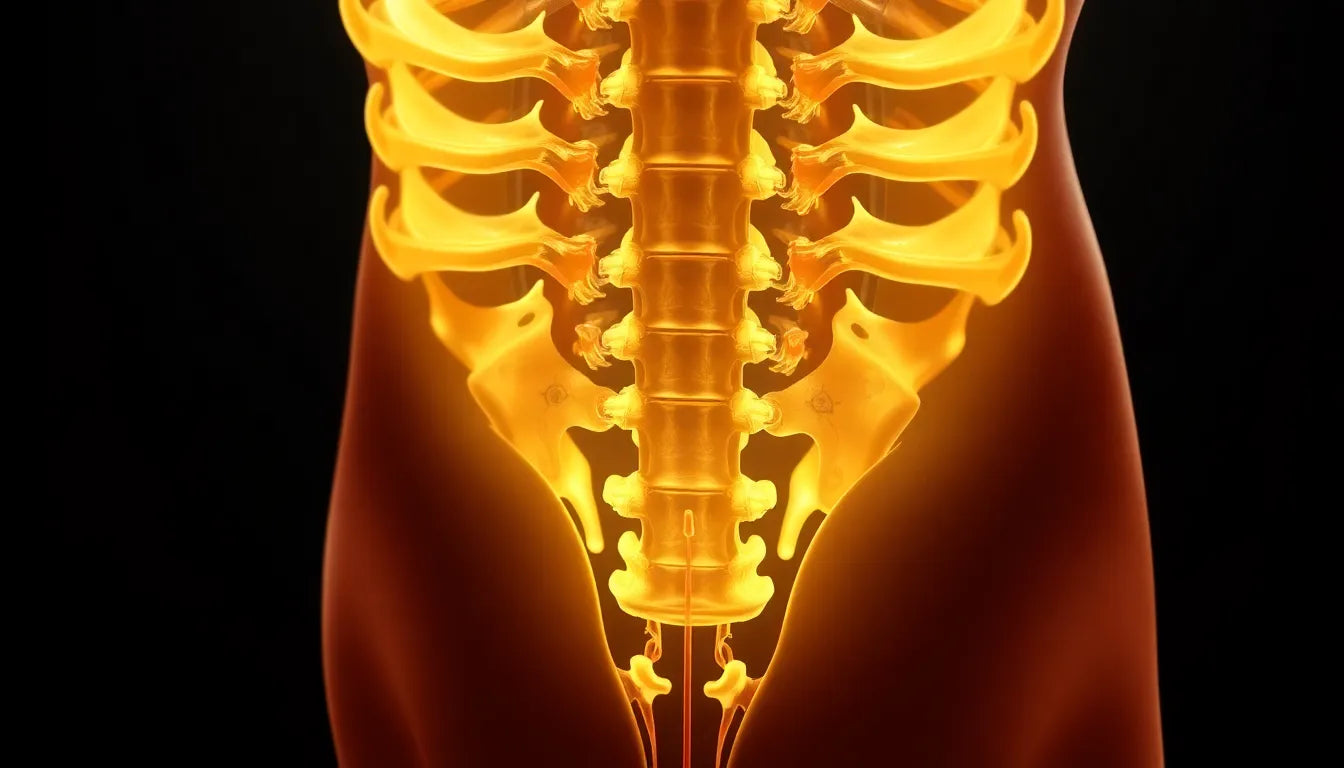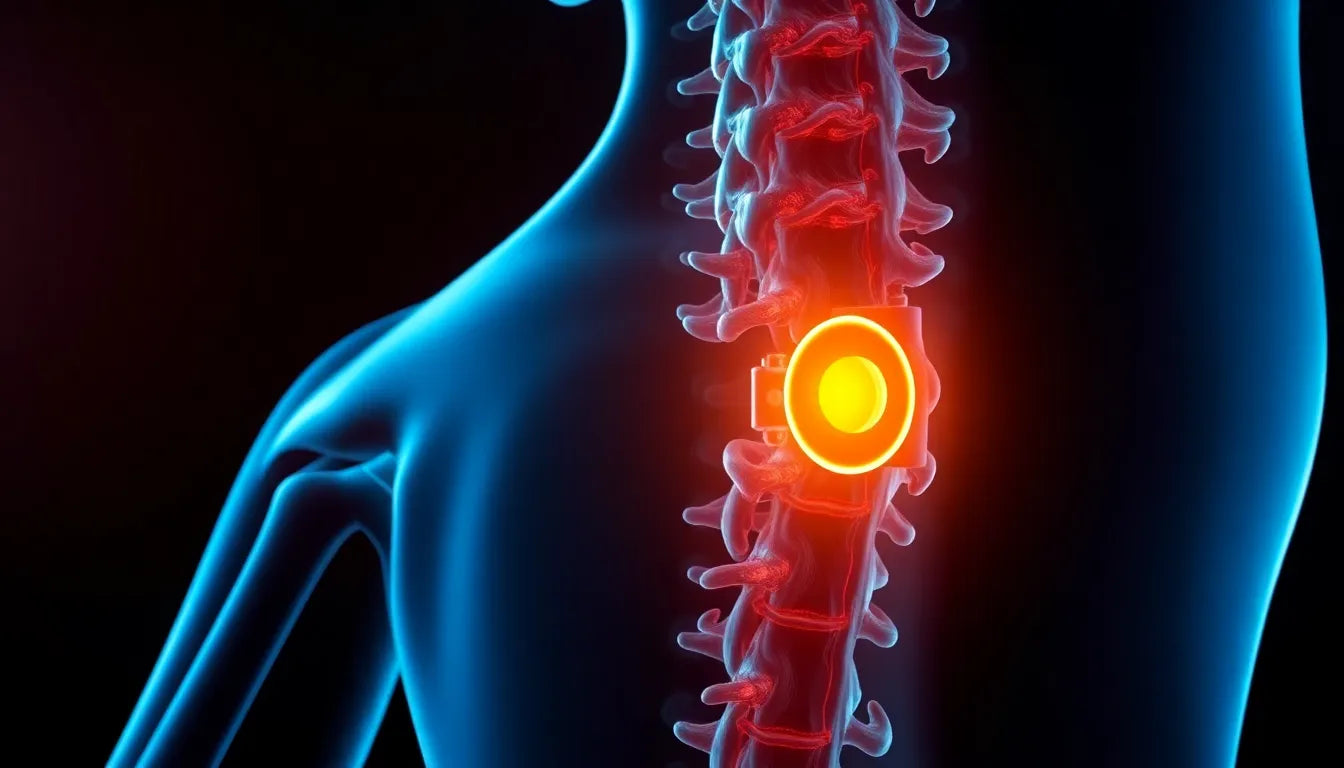Understanding the complexities of a herniated disc is crucial for those experiencing its effects. A herniated disc, often referred to as a slipped or ruptured disc, occurs when the soft center of a spinal disc pushes through a crack in the tougher exterior casing. This condition can significantly impact daily life, causing discomfort and restricting mobility. Common symptoms include pain, numbness, and weakness, particularly in the limbs, which can disrupt routine activities and reduce overall quality of life.
Prevalence and recovery potential
Herniated discs are more common than many might think, affecting a broad spectrum of the population, from young adults to older individuals. The good news is that with effective rehabilitation strategies, recovery is not only possible but probable. Rehabilitation focuses on alleviating pain, improving mobility, and enabling individuals to return to their normal activities.
The importance of rehabilitation
Rehabilitation plays a vital role in managing herniated discs, serving as a primary approach to treatment. Through a combination of tailored exercises and lifestyle adjustments, rehabilitation aims to reduce pain and restore function. One of the key goals of rehabilitation is to empower patients to regain control over their lives by minimizing discomfort and enhancing physical capabilities.
Conservative treatments are often the first line of defense against herniated discs. These non-surgical methods prioritize personalized care, focusing on exercises and therapies that cater to the specific needs of the individual. By addressing the root causes of pain and dysfunction, conservative treatments help patients avoid the need for more invasive procedures.
Incorporating rehabilitation into a herniated disc treatment plan not only alleviates symptoms but also addresses the underlying issues that contribute to disc herniation. This holistic approach ensures that patients receive comprehensive care that promotes long-term health and well-being.
In conclusion, understanding herniated discs and the importance of rehabilitation is essential for anyone seeking to overcome this condition. By focusing on effective rehabilitation strategies, individuals can reclaim their lives and enjoy a future free from the limitations imposed by a herniated disc.
Conservative treatment approaches for herniated disc rehabilitation
When dealing with a herniated disc, conservative treatment approaches are often the first step in rehabilitation, focusing on non-surgical methods to alleviate discomfort and restore function. Among these, personalized physical therapy stands out as a cornerstone of effective treatment. Tailored exercise programs are designed to meet the unique needs of each individual, addressing specific symptoms and promoting recovery.
Personalized physical therapy
Customized exercise regimens are essential in managing herniated discs. These programs typically include core strengthening exercises, water-based activities, and walking routines. Core strengthening is crucial as it helps stabilize the spine, reducing the stress on the herniated disc. Water exercises offer a low-impact environment that supports the body while allowing for movement, making them ideal for those with significant pain. Walking, on the other hand, helps maintain mobility and enhances circulation, contributing to overall recovery.
Through these exercises, patients can experience pain reduction, improved posture, and increased mobility, all of which are vital for regaining a normal lifestyle. The personalized nature of these programs ensures that each patient receives the most suitable exercises for their condition, maximizing the benefits of physical therapy.
Lifestyle modifications to support recovery
In addition to physical therapy, lifestyle modifications play a significant role in the rehabilitation process. Simple changes, such as incorporating heat or cold therapy, can provide immediate relief from pain and inflammation. Heat therapy helps relax tense muscles, while cold therapy reduces swelling and numbs sharp pain.
Activity modification is equally important. Patients are encouraged to avoid activities that exacerbate their symptoms, such as heavy lifting or prolonged sitting. Instead, maintaining good posture and integrating regular breaks during sedentary tasks can prevent further strain on the spine.
Therapeutic techniques in physical therapy
Various therapeutic techniques are employed in physical therapy to enhance recovery from a herniated disc. Aquatic therapy, for instance, uses the buoyancy of water to support the body, allowing for pain-free movement. Manual therapy involves hands-on techniques to manipulate the spine and surrounding muscles, relieving tension and improving alignment.
Electrical stimulation is another common method, using small electrical currents to reduce pain and promote muscle function. Spinal decompression and traction are also utilized to gently stretch the spine, alleviating pressure on the herniated disc and facilitating healing. The integration of technology, such as TENS units and decompression tables, further enhances the effectiveness of these therapies, providing targeted relief and aiding recovery.
Medical interventions and their role in rehabilitation
While conservative treatment is often effective, some cases may require medical interventions to manage symptoms more effectively. Pharmacologic options, such as non-steroidal anti-inflammatory drugs (NSAIDs) and corticosteroid injections, are commonly used to control pain and inflammation. These medications provide temporary relief, allowing patients to engage more fully in physical therapy and other rehabilitation activities.
Minimally invasive procedures
In situations where conservative treatments do not yield sufficient improvement, minimally invasive procedures may be considered. Steroid injections, for example, can be administered directly into the affected area to reduce inflammation and alleviate pain. These procedures are typically considered when pain persists despite several weeks of conservative care or when severe symptoms, such as significant nerve compression, are present.
Overall, the combination of personalized physical therapy, lifestyle modifications, and, when necessary, medical interventions, forms a comprehensive approach to herniated disc rehabilitation. By employing these strategies, patients can effectively manage their symptoms, enhance their quality of life, and reclaim their ability to engage in everyday activities.
Surgical options and considerations for herniated disc rehabilitation
While most herniated disc cases respond well to conservative treatments, surgery may become necessary for some patients. Surgical intervention is typically considered when symptoms persist despite exhaustive non-surgical efforts or when severe symptoms, such as significant nerve compression or loss of bowel or bladder control, are present. Surgery aims to relieve pressure on the spinal nerves, alleviate pain, and restore function.
Types of surgeries
Several surgical options are available for herniated disc treatment, each tailored to specific patient needs. A discectomy involves removing the herniated portion of the disc to relieve nerve pressure. A laminectomy, on the other hand, involves removing part of the vertebra to create more space for the spinal nerves. In some cases, spinal fusion may be performed to stabilize the spine by fusing two or more vertebrae together. These surgeries are generally considered a last resort and are only recommended when non-surgical methods have failed to provide relief.
Recovery and long-term management
Recovery timelines for herniated disc treatment vary depending on the chosen approach. Conservative treatments typically result in gradual improvement over several weeks to months, while surgical recovery may take several weeks, with full recovery taking several months. Regardless of the treatment method, ongoing exercises and lifestyle adjustments are crucial for preventing future disc issues. Patients are encouraged to continue physical therapy exercises, maintain a healthy weight, and practice good posture to support long-term spinal health.
Visual aids and resources
For a comprehensive understanding of herniated disc rehabilitation, visual aids such as tables and diagrams can be incredibly useful. A summary table of treatment options and their purposes can clarify the differences between conservative and surgical approaches. Additionally, instructional videos or diagrams demonstrating exercises and therapy techniques can enhance understanding and provide guidance for at-home practice. These resources empower patients to actively participate in their rehabilitation journey, fostering better outcomes.
Frequently Asked Questions
What are the first steps in treating a herniated disc?
The initial steps in treating a herniated disc typically involve conservative measures such as rest, physical therapy, and lifestyle changes. These approaches focus on reducing pain and inflammation while improving mobility and function.
How long does it take to recover from a herniated disc?
Recovery timelines can vary widely. With conservative treatment, improvement is often seen within a few weeks to months. Surgical recovery may take longer, with full recovery potentially taking several months, depending on the procedure and individual circumstances.
Are there exercises I should avoid with a herniated disc?
Yes, certain exercises that place excessive strain on the spine should be avoided, such as heavy lifting, high-impact activities, and exercises that involve twisting or bending. It is important to work with a physical therapist to determine safe and effective exercises tailored to your condition.
When should I consider surgery for a herniated disc?
Surgery is typically considered when conservative treatments have failed to alleviate symptoms after several weeks, or when severe symptoms, such as significant nerve compression or loss of bowel or bladder control, are present. A healthcare professional can provide guidance on whether surgery is appropriate for your situation.
Conclusion
Rehabilitation for herniated discs is a multi-faceted approach that prioritizes conservative treatments while reserving surgical options for more severe cases. By embracing personalized physical therapy, lifestyle modifications, and, when necessary, medical interventions, individuals can effectively manage their symptoms and reclaim their lives. It is crucial for patients to seek personalized treatment plans that cater to their unique needs, ensuring optimal recovery and long-term spinal health.
Sources
- ChoosePT. "Physical Therapy Guide to Herniated Disk."
- Mayo Clinic. "Herniated Disk: Diagnosis and Treatment."
- Sciatica.com. "11 Treatment Options for Herniated Discs."
- Medical News Today. "Herniated Disk Exercises."
- Lattimore Physical Therapy. "How Can a Physical Therapist Treat a Herniated Disc?"
- WebMD. "Herniated Disk Treatment, Remedies, and Medications."


















